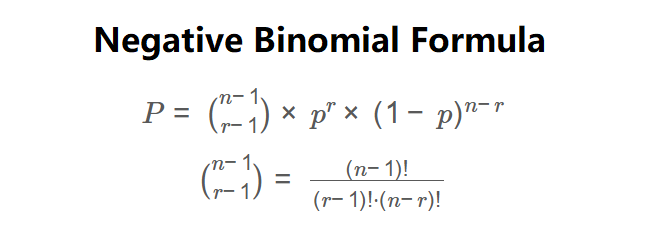 Home
Home
 Back
Back

Definition: The Negative Binomial Distribution Calculator computes the probability of achieving a fixed number of successes in a specific number of trials, along with the number of combinations, for a negative binomial distribution.
Purpose: This tool helps analyze scenarios involving repeated trials until a specified number of successes, such as in quality control, marketing campaigns, or games.
The calculator uses the following formulas:
\( P = \binom{n-1}{r-1} \times p^r \times (1-p)^{n-r} \)
\( \binom{n-1}{r-1} = \frac{(n-1)!}{(r-1)! \cdot (n-r)!} \)
Where:
Steps:
Calculating negative binomial probabilities is essential for:
Example: Calculate the probability of needing 5 trials to achieve 2 successes when flipping a fair coin (p = 0.5):
Q: What is the negative binomial distribution?
A: It models the number of trials needed to achieve a fixed number of successes in independent Bernoulli trials with constant success probability.
Q: How does it differ from the binomial distribution?
A: The binomial distribution models the number of successes in a fixed number of trials, while the negative binomial models the number of trials until a fixed number of successes.
Q: What are practical applications of this calculator?
A: It’s used in quality control, marketing, and games to estimate the number of attempts needed for a target number of successes.